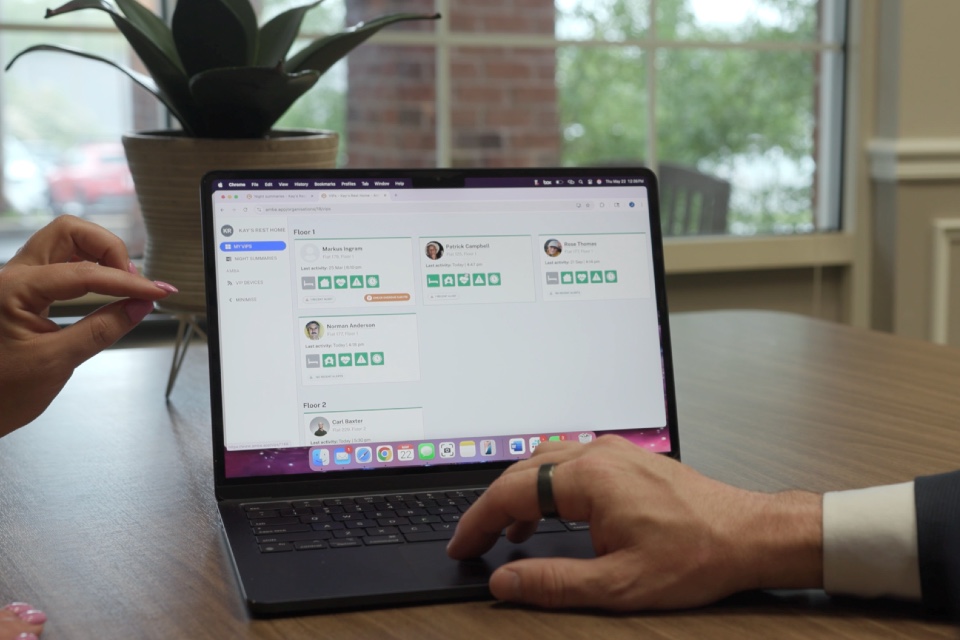Stephen Boyle, TeleTracking UK’s Product Specialist, recently returned on a part time basis to front line Critical Care nursing at East Cheshire NHS Trust in response to Covid 19. Here he explains, how based on his experience, he doesn’t believe that the NHS has changed its operating model, despite a general consensus that it’s recently undergone transformational change. He argues that most changes have been driven by pragmatic necessity and not deliberate innovation…
In my view the NHS has not fundamentally changed its operating model. Sure, it has adapted to cope for the Covid-19 (C19) surge. So, prognosticating that this is some great disruptive event may be a little premature. Most of the changes we have seen have been driven by pragmatic necessity and not deliberate innovation. In short, the NHS has at some speed reconfigured its estates and added private sector hospital and nightingale capacity. It has retrained and redeployed staff and stalled 1000’s of lines of service.
There were rapid structural changes too. Large payments to the underfunded social care system to enable them to take elderly patients from languishing in hospitals and place them into nursing homes. Notably, the Department of Health assumed a more direct role in operations for the first time in a decade and there is a view that some of this direct command may stick and the demise of CCGs may come sooner than planned.
Financial changes included the writing off historical deficits. But, to be clear, this funding has nearly all been spent on necessary spending for additional ICU beds, increased payments for staff (overtime & incentive premiums) and for PPE.
The NHS now finds itself working flat out to re-establish capacity to near pre-C19 levels before Winter. Set against a backdrop of a vast amount of stored-up, unmet need in the population and millions of patients now backed up on waiting lists. Plus facing a restart in an environment of reduced capacity due to social distancing. All while the Novel Corona Virus C19 remains in circulation.
Unintended Consequences
To think, as well, that patients staying away from A&E was due to some seismic shift in their attitudes to how they had previously accessed these services is wrong too. Instead the record reductions in attendances were brought about by many complex factors, such as fear mixed with good citizenship. Fear of catching C19 and staying at home, in droves, to deteriorate or even die, as not to bother the doctors and nurses. But, also, let’s not forget too that most of the population stayed at home and did not travel or commute on busy roads, with subsequent reductions in air pollution and coupled with fine warm weather. The reality was that even throughout a major part of the crisis patients needing major care interventions still attended, and the vast reductions in attendance came from reduced low level and less urgent attendances, and a significantly reduced number of admissions from the care home sector.
Indeed, there has been a significant increase in Do Not Attempt Resuscitation/ CPR and palliation of the frail in the nursing home population. A story that will no doubt be heard of more in the coming months.
But these changes are unravelling, and we are seeing pressure returning to A&E departments as the fear of the virus dissipates and the UK goes back to work.
Digital tipping point
Yes, the NHS adapted quickly to a digital-first approach to access for non-urgent care via 111, GPs and outpatients. But this shift to a digital-first is a massive non-scientific experiment – we have no evidence it works or that you get the same outcomes from a digital consultation than you do from a face-to-face one?
That is before you even consider issues around equity of access from those people without access to broadband or access to a cellular device to have the consultation on in the first place. What of those citizens who do not have English as a first language? Or for women of lesser emancipated cultures – who historically access healthcare in very low numbers? The Poor? The Homeless? Carers?
Like A&E attendances, it is likely that there will be some shift back from this to face-to-face services.
What disruption will stick?
So, healthcare in the UK has seen massive changes driven from necessity. Yes, many of the changes have been pragmatic and yes, we have seen massive channel switches for how healthcare can be delivered. I do foresee a sustained disruption of the old-normal operating model in especially, the ambulatory care settings. Meaning permanent significant percentage shift from face-to-face to digital consultations.
Yes, and some other less tangible changes will stay too. Such as improved health care literacy of the citizenry on what to do during the time of a pandemic. Frequent hand washing might become a habit that stays, and we see some reductions in the spread of Norovirus and influenza this winter. Plus, a massive up-take in the seasonal ‘flu-jab’.
Chemotherapy over Zoom!
But the NHS will have to shift back into some semblance of pre-C19 operations. Chemotherapy and joint replacements cannot be given ‘over the airways’ and who wants to get their diagnosis of a terminal disease given to them via email?
Beds will need to re-open; staff will need to be deployed back to their wards and the workforce pressures will reappear.
No doubt NHS staff will need to take time off and the NHS will have to provide psychological services, at an unprecedented scale, to treat the no doubt high levels of ‘burnout’ and PTSD of a service that has been under pressure dealing with a novel disease for the best part of four months.
Testing times
The NHS will have to operate while undertaking a new discipline of serial C19 (PCR) and C19 antigen testing regimes for staff and for patients. Then streaming patients into appropriate pathways. Implementing operational services against a regimen to maintain social distancing and ‘one way’ systems. We must be able to re-establish treatment for Cancer patients and patients with compromised immune systems safely in NHS facilities.
A key point here will be the dependency the NHS services will have on ‘testing’. Here I mean the scale of testing, the responsiveness of testing, and overall the turnaround of test results will directly impact how much capacity and staffing providers will have available.
Clinically, my real challenge is how do you show empathy and care to patients while you both are wearing facemasks?
The New Not-So-Normal
The challenge for the NHS is ‘ramping up’ services to the levels needed. This means identifying every patient on a ‘waiting list’ who needs treatment now. It means shared waiting lists between providers. It means re-establishing effective patient throughput & flow in new pathways. It means seeing the patient’s journey not ending with their discharge from a hospital bed. It means that care will have to continue in another facility or be supported by services at home.
It also means that what is needed is the capability to view capacity, not just of physical things (e.g. beds) but non-physical too (e.g. Virtual Wards, rapid response team capacity, call slots).
Moreover, this capability needs to extend beyond the walls of each individual hospital, taking into consideration that a hospital’s capacity might now include additional capacity located in the local, or not-so-local, private or neighbouring NHS hospital. That services and capacities will need to be shared flexibly with neighbouring providers (mutual aid).
So, the scale and locations of care will complicate the patient’s pathway and access to treatment is further complicated by testing and your C19 status.
Every minute of capacity now matters more now than it ever did.
When minutes matter
One of the good things coming out of the crisis, in UK healthcare, has been the rapid establishment of control rooms & command centres and the centralisation of decision-making and data.
In the C19 crisis many NHS providers have reported that command centres have delivered the operational sensitivity and levels of situational awareness that they have never had before.
This capability has helped them manage the rapid changes brought by C19, allowing for rapid decision making and a best use of resources (e.g. bed utilisation and the distribution of scarce PPE).
The Covid-19 crisis has laid bare to NHS leaders the reality of the lack of interconnectedness and sheer complexity of healthcare systems and highlighted that the paucity of real-time data created significant challenges in the pre-C19 model that operated without these centralised command centres. Especially with the coordination of care, system-wide responsiveness, and closed communication gaps, which lead to delays for patients in accessing care, inflated lengths of stay, cause high variable costs, and contribute to staff stress.
By leveraging real-time data and providing operational live views of capacity and demand, command centres provide decision makers the insights needed to ensure delays in carecoordination are minimised and communication gaps closed. If we are to meet the needs of our patients and tackle the stored up, unmet need in the population caused by C19 then every bed minute counts and the NHS needs technologies to help it maximise the occupancy of those beds safely.
In short, command centres are not just for a crisis but for every day.
Indeed, Chairman and Partner of the Global Health Practice at KPMG International and author of In Search of the Perfect Health System, Dr Mark Britnell cites command centres as one of the ten ways in which health systems are adapting to a new reality.
What we knew as normal may never come back, certainly not until we have an effective treatment or vaccine for C19. Some of the changes brought about by the reaction needed to cope with C19 may stay. But establishing a real-time patient flow command centre will mean every minute of capacity can be seen and can count to ensuing patients get the care they need when they need it.
- HSJ podcast – the NHS in the next 6 months (May 2020)
- However the Phase 3 detailed guidance has been delayed on this till July
- Be that 1m or 1.5m or 2m all will impact capacity
- 50 % increase in attendances since the major drop off in April 2020
- Drive from the DoH for Hospitals to adopt the ‘Attend-Anywhere’ software platform
- GP practices, clinics and outpatient departments
- BMJ – scathing report on the poorly planned use of antigen testing
- E.g. Non Covid (green pathways)
Stephen has over 30 years’ experience in healthcare, beginning his career in nursing. Stephen has worked extensively in healthcare IT and has been involved in the design, implementation and delivery of IT solutions. Stephen is TeleTracking UK’s Product Specialist and is responsible for early engagement and pre-sales.






